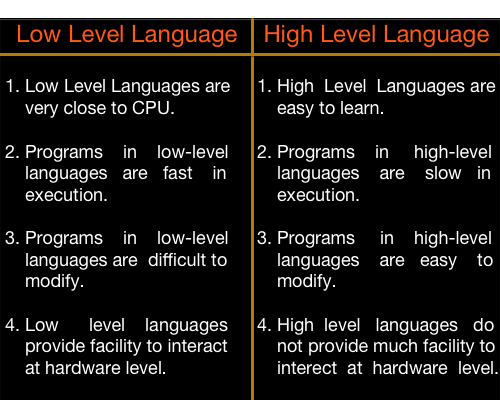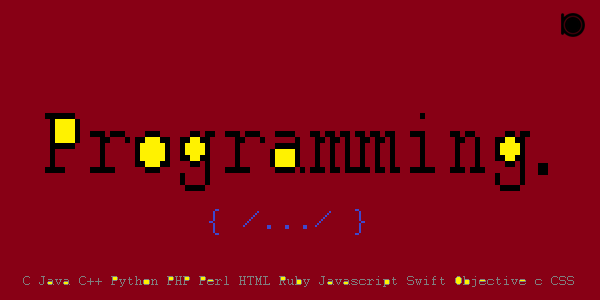In this topic we will learn about the basis of the programming language and its concept.
We know that the computer is an electronic device. It consist of hardware and softwares. The physical parts of the computer are called as the hardware and the part that helps those hardwares to have their function properly by instructing them are called as the softwares.
Software is the collection of the programs which helps the user to communicate with the hardwares available in the computer and program is the bunch of instructions written in different programming languages. According to wikipedia “A programming language is a formal language, which comprises a set of instructions used to produce various kinds of output”. Programming languages are the methods or techniques that helps to make programs or simply, to make communication with the hardwares. The programming language consists of different instructions written with the help of the syntax as per the programming language rules. There are different programming language like C, C++, Java, Python, Swift etc.
Programming languages are categorized into different levels as per their evolution.
1. Low Level Language (LLL)
2. High Level Language (HLL)
1. Low Level Language (LLL)
The low level language consist of machine language and assembly language. It is the only language understandable to the computer. Low level language is very close to CPU but it is very difficult to the human being to understand the low level language. It is mainly written in binary code or hexadecimal code.
Low level language is the basis of the computer language. Every language either it is Low Level or High Level language all are ultimately converted into machine language for the operation of the computer.
Low Level languages are further categorized into two parts.
1. Machine Language
2. Assembly Language
-
The
machine languageis written completely in binary code or hexadecimal code. So it is seldom used in programming. Machine code is directly executed by processer and is executed very fast. -
The
assembly languageis written in mixture of binary, hexadecimal and some English like words called as mnemonic like ADD, JMP, MOV, MUL etc. known as keywords in programming languages. Assembly languages are easier to understand than machine language. Most critical and part of programs like driver, bootloader, kernel etc that are very close to hardware are written in assembly language. The assembly language is translated into machine code using the translator called as assembler.
2. High Level Language (HLL)
The high level language are close to programmer. High level languages are more user friendly for the development of programs. They are easy to understand and are later converted into machine language for the further processing. High level language are English like language that makes programming more readable and easy to debug then they are translated into machine language by various translators like compiler and interpreter. They do not interact directly with the hardware. Rather, they focus more on the complex arithmetic operations, optimal program efficiency and easiness in coding. Programming languages such as C, C++, Java, Python, Swift etc. are some examples of High Level Language.
Difference between High Level Language and Low Level Language

Advantages of High Level Language over the Low Level Language
- High level languages are easy to understand to the programmer as it uses the english like syntax.
- It is the machine independent language.
- Easy to learn.
- Program maintenance is easier.
- High level language are portable.
- Program development is faster.
